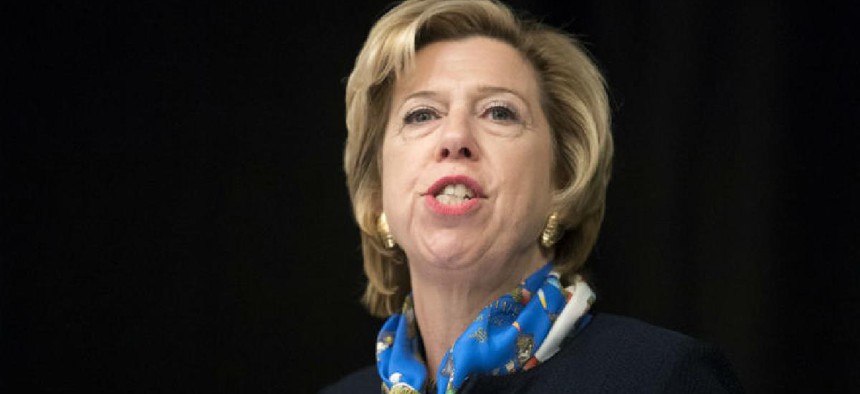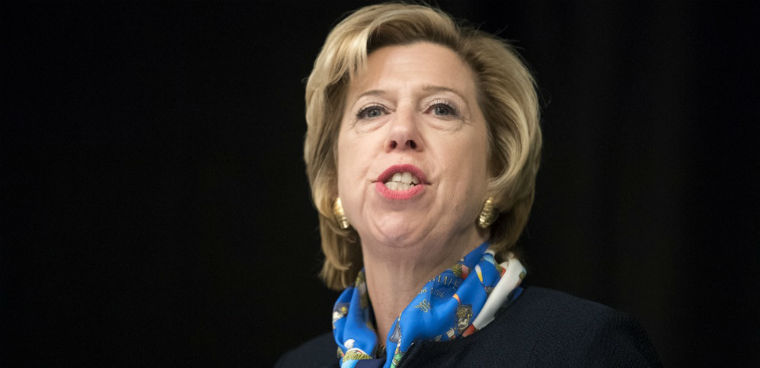Defense contractors pressure White House, DOD for more pandemic stimulus funds

Major defense company executives are pushing the White House and Pentagon for additional financial relief due to increased costs caused by the coronavirus pandemic.

Top industry executives have written to Undersecretary of Defense for Acquisition and Sustainment Ellen Lord and other senior administration officials, asking them to cover more of the COVID-19 costs that contractors have incurred.
Major defense company executives are pushing the White House and Pentagon for additional financial relief for the increased costs caused by the coronavirus pandemic.
The request goes beyond the stimulus under the CARES Act enacted in March, which permitted DOD to pay government contractors who could not return to work due to pandemic health and safety measures.
CEOs representing Boeing’s defense sector, General Dynamics, Lockheed Martin, Raytheon Technologies, L3Harris Technologies, Huntington Ingalls Industries, BAE Systems’ U.S. subsidiary and Textron signed onto letters addressed to the Office of Management and Budget and DOD’s acquisition chiefs.
The executives argue that those workforce expenses are only part of the total costs added for companies to fulfill their DOD contracts.
“Section 3610 workforce costs are just one category of COVID-19 impacts on industry,” the executives wrote in a letter to the Office of Management and Budget dated July 7. “Other COVID-19 costs resulted from travel restrictions, international and domestic facility closures, social distancing within facilities, the purchase of personal protective equipment (PPE), sterilization costs, and the financial impacts associated with manufacturing and supply chain disruptions.”
The executives also plan to submit rough costs to DOD “by the end of this week,” according to the letter addressed to defense acquisition chiefs.
The letters come nearly a month after Ellen Lord, the undersecretary of defense for acquisition and sustainment, testified before the House Armed Services Committee that DOD needed upwards of $10 billion in anticipation of relief claims from contractors.
Lord’s request for “lower double-digit billions” were met with some skepticism from HASC Chairman Adam Smith (D-Wash.), who said DOD could "adjust within their existing budget strength” to make up for the additional contracting costs.
The defense company executives, however, warned that reallocating existing DOD funds would “cause significant reductions to DOD Procurement and Research, Development, Testing and Evaluation (RDTE) accounts and inadvertently curtail DoD modernization efforts,” according to the letter to DOD.
Kea Matory, the National Defense Industry Association’s director for legislative policy, told FCW the letters, while penned by big defense companies, reflect the pain points felt by smaller businesses as well.
“We are hearing the same need for equitable adjustments from our small and mid-size companies,” she said via email. “Many with small margins and fewer contracts.”
Matory also said shifting DOD funds to cover added pandemic costs could raise an accounting issue.
“There appear to be issues with re-appropriating the $17 billion in the CARES Act from an accounting standpoint, since this money was supposed to be paid back and equitable adjustments would not,” Matory wrote.
When asked about the letters, Jessica Maxwell, a Defense Department spokesperson, told FCW via email that DOD will update the industry base once the Pentagon’s OMB request for additional funding is reviewed.
“The Department appreciates the letter from the CEOs of some of our key partners, voicing their concerns about impacts on supply chains during COVID-19. The Department submitted a request for additional funding to OMB. Once we have an update on the funding, we expect to be better positioned to get more specific on this matter,” Maxwell wrote.
Supply chain and domestic production
In addition to contracting costs, DOD has been vocal about COVID-19’s strain on the defense supply chain, particularly when it comes to security weaknesses, and the need to boost domestic production.
“There’s a much larger awareness of issues we have with our supply chain being offshore with potentially adversarial countries” thanks to COVID-19, particularly with technologies such as microelectronics, Lord said at a July 8 Brookings Institute event on defense spending during the pandemic.
“We have gotten ourselves into a potentially compromised position where we have U.S. intellectual property in terms of designs going offshore for fabrication and packaging leaving us with some vulnerability there that is unacceptable moving forward,” Lord said.
As a result, DOD wants to bolster domestic manufacturing. “We are starting literally with the United States; as always in acquisition, competition is our friend” and the goal is to have at least two sources, one of which is domestic, she said.
But Lord said other acquisition reforms could yield the biggest benefits.
“The largest impact we can have is really making sure we speed up and get cost out of the acquisition process,” she said.
“If you really want to do agile DevOps development versus the traditional waterfall, you need to budget differently for that,” she said, touting DOD’s Adaptive Acquisition Framework, which aims to simplify policy and tailor buying approaches to specific needs.
Lord said DOD is using a separate software acquisition pathway and working with Congress on pathfinder programs “where we’re looking at a software color of money that doesn't have the same constraints as typical money that comes into programs.”
Ross Wilkers contributed to this report.
NEXT STORY: GSA doubles down on STARS



